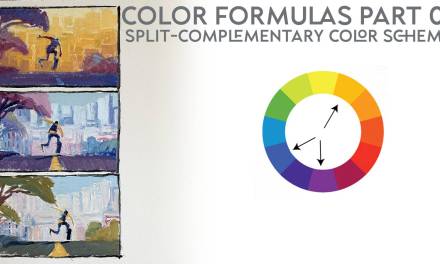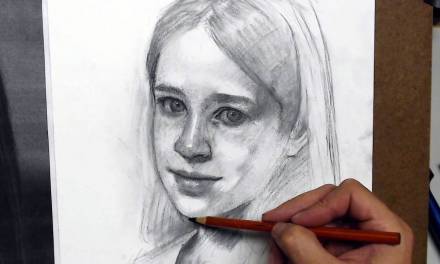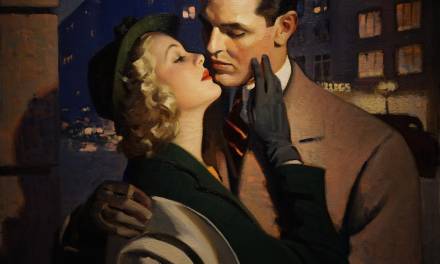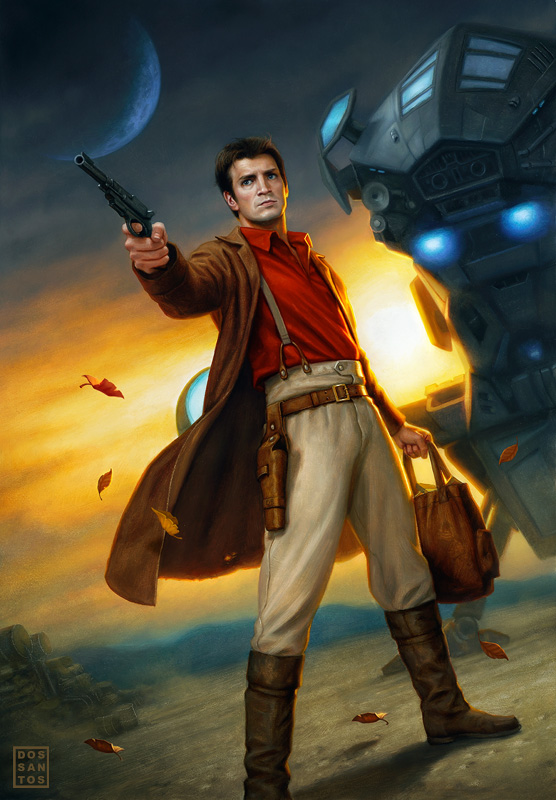I was having a conversation with a fellow artist this past weekend, and we both brought up this wonderful Ted Talks lecture by Tim Harford, as a fantastic example for why experimentation, and thusly failure, is so important in art.
In this video, Tim discusses an experiment by Unilever to create a hi-fidelity spray nozzle. It may not sound particularly applicable to our field at first, but it really is. When you watch this segment of the lecture (at roughly the 9:00 mark), consider it’s correlation to the process of creating thumbnails.
After I watched the video, I was reminded of the fantastic lecture I heard Greg Manchess give on “talent” at this year’s Illustration Master Class. Thinking it would interest him, I decided to forward this video to Greg, and here is what he had to say:
For the past two years, I’ve given a lecture about the term ‘talent’ at the Illustration Master Class. It’s really a lecture about failure, why to use it, and why to embrace it. The lecture entails understanding something we all experience, must experience, in our lives, especially involving our artistic skills.
Our great institutions of art are not interested in dealing with this most precious teaching tool as they are all about discovery, and not about the process of finding. In short, they are only interested in the talented, as if this springs forth out of nowhere in only the ‘gifted ones.’
Learning to become an artist is all about training, and training is all about embracing your failures, to learn from them and press on. Generally, my lecture to the IMC students is to implore them to utilize the failures that are inevitable, necessary, in the process.
It’s most certainly not a pep talk. In fact, it’s about how painful the process can be. It isn’t fun, until you’ve been through it. Survive it, and keep going.
I just heard one of my favorite quotes, this one by Irish playwright Samuel Beckett, on the radio again today. I hope you can embrace it:
“Nothing else ever. Ever tried. Ever failed. No matter. Try again. Fail again. Fail better.”
I know that I, for one, am guilty of relying on a process too much. I have stumbled across a method that consistently reaps good results for me. Thusly, I have very little incentive to experiment. After all, why risk the possibility of failure when you can play it safe and guarantee moderate success? The trouble is, good results are not good enough… I want great results. And to achieve that, failure is necessary.
I am going to challenge myself to take more risks, and fail more often. I challenge you all to do the same.






Some of my best paintings happen in spite of anything I might do. Typically I'll fight it every inch of the way, and be at risk of total failure at every step, constantly wondering WHY I EVER wanted to be an Artist. Nothing but struggle, and suddenly, right at the end, the whole thing falls together, and I succeed in amazing myself, say “That wasn't so hard, after all.” The hard part was forcing myself to push the boundaries. Like Sisyphus, push the rock to the top of the mountain. I remember why I wanted to be an artist, after all, and I watch the boulder fall back down to the bottom of the mountain, so I can do it again. To me, that's what it means to be an artist. It's about growth, not products………
i am sitting on a painting that might well be such an exercise in beckett (not the fail better part of the quote). wondered whether i should finish it because i dont feel particularly drawn to it right now. thanks for making me hang in there and sit down with it again. 🙂
Great post about learning. Applicable far more broadly than in art.
Wonderful post Dan. I very much enjoyed the bit in the video about the nozzle. It seems that the more success we garner, the more difficult this process of experimenting is. Thank you for the reminder.
That quote by Samuel Beckett reminds me of my favorite quote. It was said by a 90 year old man after just climbing a mountain near the north pole, he said: Dream big, and dare to fail.
Every time I start a painting, I try to make it the best one ever. Thank god, I fail every time.
There is a book by a Japanese author (in translation) entitled THE NOBILITY OF FAILURE.
Amazing. This makes me think a lot about all the times I've “failed” in a painting and haven't thought about how to learn from it.
We only fail if we don't try. Like baseball player Babe Ruth said, you should let the fear of striking out get in your way.
I'd never reflected much on it before, but I found something quite interesting. One of my favorite quotes/philosophies of life is always “Things always work out in the end. If they haven't worked out, it's not the end yet.” I've lived by these words, and, in fact, have always made it through the rocky parts of life. Now I've never thought this was some mystical 'fate' or the like, but I'd never really noticed that each time things are going bad (in anything, not just art), on of my other mantras pops in – learn from your mistakes. Art, life, anything, it's all just a series of trial and error. Keep trying until something works. Then try some more.
Wonderful post, thanks for sharing that TED video, it's one I haven't seen yet and greatly enjoyed it.
Amazing talk! Thanks for posting it Dan. I love the concept of “failing better”.
I've seen this on TED 2 weeks ago.
Very good post.
I believe you might find this post on Alex Toth interesting.
http://sirspamdalot.livejournal.com/81283.html
Thanks for posting this. My painting studio is in a building populated mainly by computer geeks, and something I hear a lot is: Launch in beta. Fail fast, keep failing, and fail better.
Also thanks for making the correlation to the term “talent.” An artist's idea of their own talent is a kind of God complex, isn't it?
Great article, have to check out the video.
I had written a post about the fear of failure, referring to a video from Milton Glaser, earlier this year: http://fantasiox.blogspot.com/2011/06/fear-of-failure.html
The main problem he describes is to keep the line between professionalism and transgression, which are actually contradictory, but also necessary. Not talking about graphic designers, artists or illustrators have it easier to experiment, because people expect artists to do that, but from a business point of view, people only want you to repeat success.